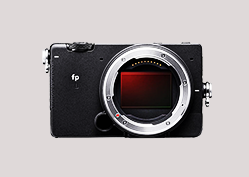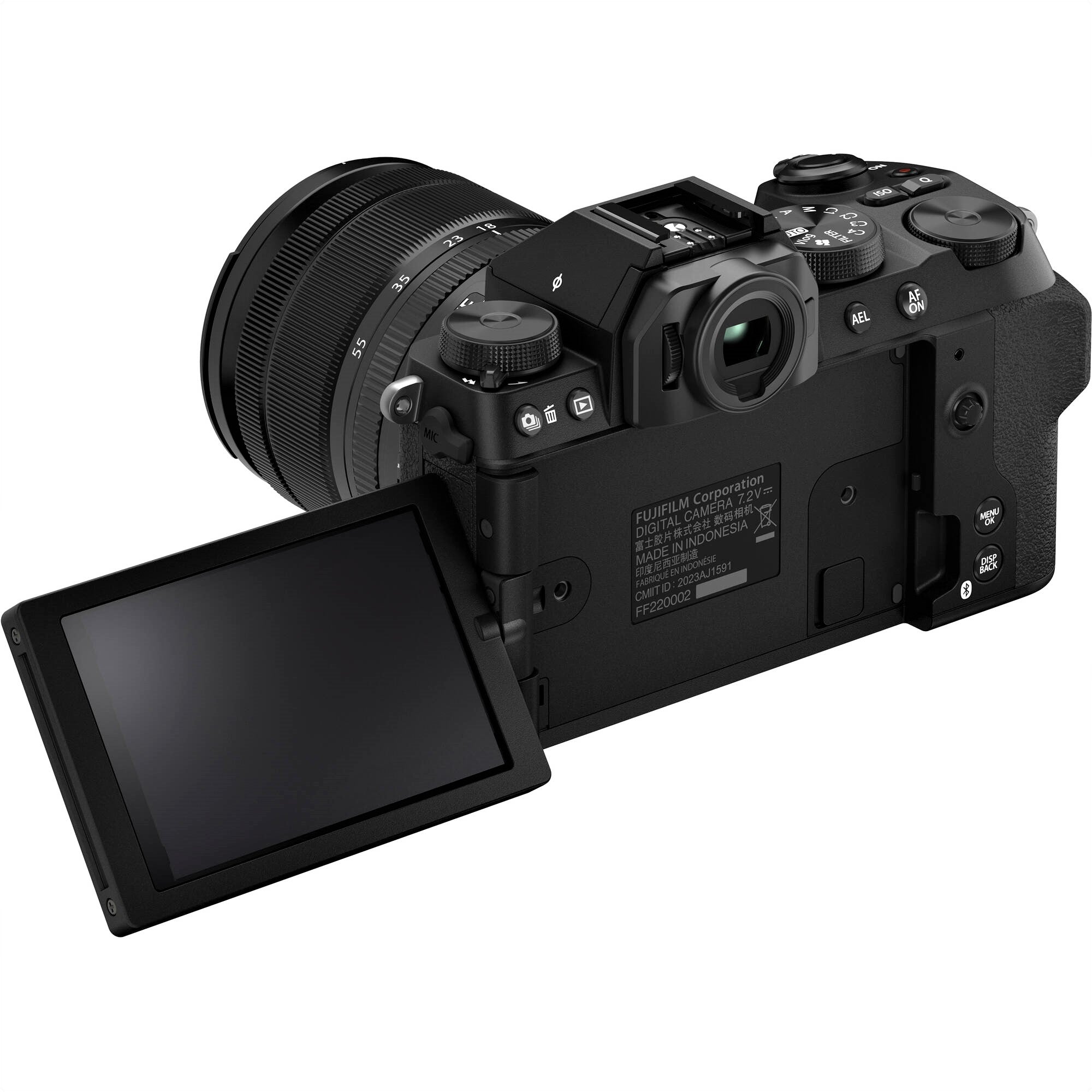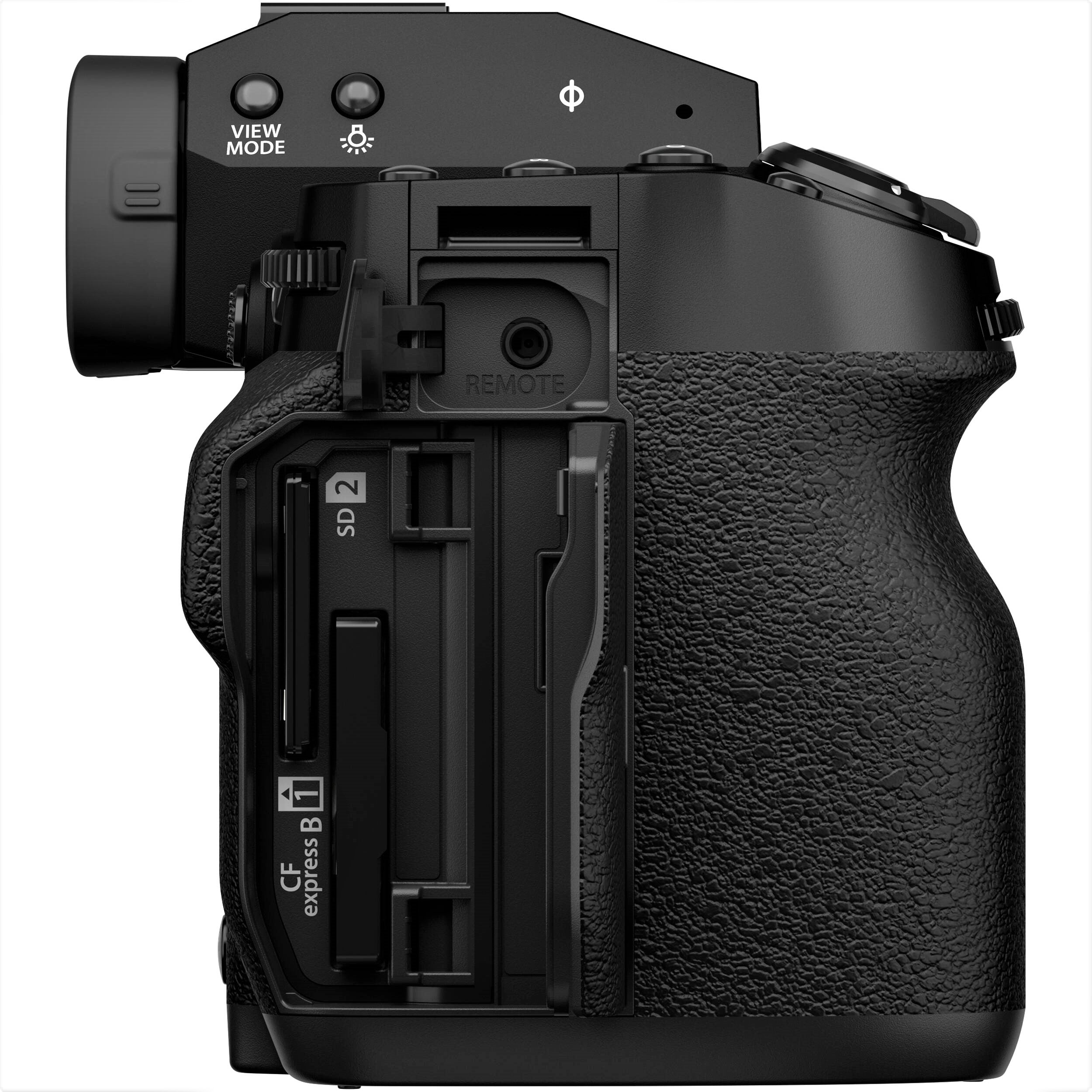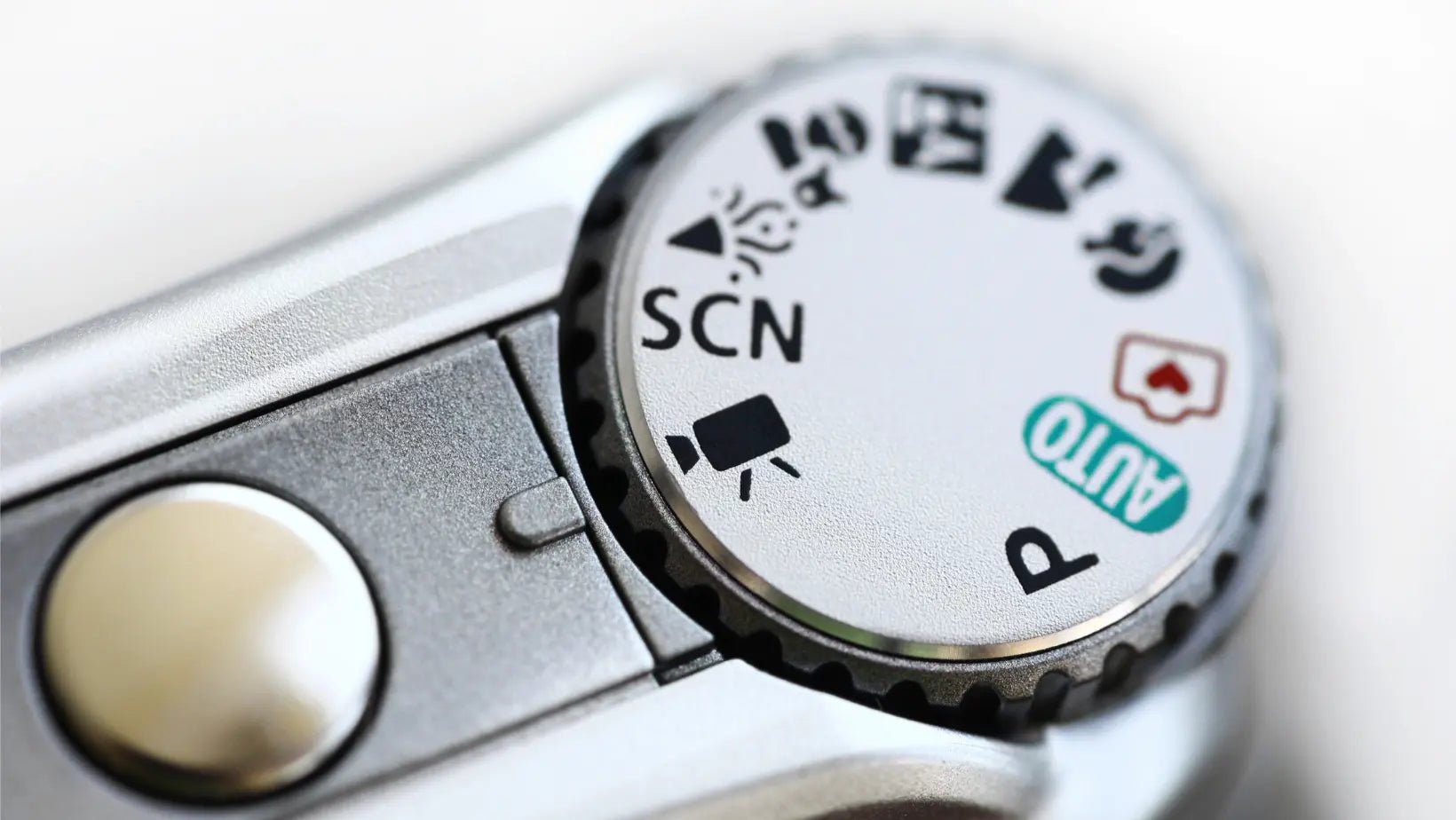Difference Between Mirrorless and DSLR: A Comprehensive Guide
Setting out on a photo quest is simple but important. First, pick your camera. Will it be a trendy mirrorless or a classic DSLR? Your decision shapes your shots.
Here’s a brief look at both. Mirrorless cameras are small and sleek. They ditch the old mirror system, making them light and fast. Great for quick, quiet snaps, they’re perfect for street photography.
DSLRs, on the other hand, have mirrors. They send light straight from the lens to your eye. This old-school tech is reliable, especially in action shots where timing is everything.
By the end of this read, you’ll know which camera fits your style. Maybe the dependable DSLR or the modern mirrorless? Your choice will steer your photography adventure.
Understanding the Basics

Let's look at the basics of modern photography equipment: mirrorless and DSLR cameras. Each suits different needs and styles.
Mirrorless cameras are compact and fast. They don't have the usual mirror system that DSLRs do, making them smaller and quicker at processing images. These features make them popular among both pros and amateurs.
DSLRs, meanwhile, are durable and deliver top-notch photos. They use a mirror to direct light from the lens to the viewfinder, giving photographers an accurate preview of the image. This is especially useful in tough lighting or when details matter a lot.
Knowing these differences is key. It helps photographers pick the right gear for their vision and needs. Whether it's the stealth of mirrorless in street photography or the solid performance of DSLRs in nature shots, each type has its benefits.
Mirrorless Cameras: The New Contender

Compact Size and Portability
Mirrorless cameras are great for photographers on the go. They are light and easy to carry because they don’t have the heavy mirrors and prisms that DSLRs do. This makes them perfect for travel and street photography, where you need to move quickly and not feel weighed down.
These cameras also take fantastic photos. Despite their small size, they pack the latest in photo technology. This means they can handle various lighting situations and still deliver sharp, high-resolution images. They shoot fast and quietly, which is ideal when you need to be discreet, like when taking photos on the street or of wildlife.
In short, if you’re looking for a camera that’s easy to handle, doesn’t sacrifice image quality, and lets you shoot on the sly, a mirrorless camera is probably what you need.
Electronic Viewfinder vs. Optical Viewfinder
Mirrorless cameras are different from traditional DSLRs. They use electronic viewfinders (EVFs) instead of optical ones. With an EVF, you get a digital preview of your scene in real time. This shows you how changes in exposure, focus, and depth of field will look.
Seeing changes as you make them can really change how you shoot. You can try different settings and see what they do right away. This is great for tough lighting, where the right exposure is key.
Mirrorless cameras are also lighter and smaller than DSLRs. This is because they don't have the mirror reflex mechanism. They're easier to carry around, which is great for travel photographers or anyone who doesn't want a heavy camera.
But there are downsides to EVFs. They can lag and might not work as well in low light. They also might not be as clear as optical viewfinders. And they can use up your battery faster.
Knowing these things can help photographers pick the right camera. It depends on whether they want more control and feedback, or if they prefer the traditional feel and simplicity of optical viewfinders.
- Real-time Previews: Mirrorless cameras utilize Electronic Viewfinders (EVFs) to provide real-time previews of the scene, offering benefits such as exposure and depth of field information.
- Impact on Shooting Experience: Understanding the shift from optical to electronic viewfinders is essential to appreciate the changes in the shooting experience.
Autofocus Speed and Accuracy
Mirrorless cameras have changed the game in photography. They focus incredibly fast, thanks to advanced technology. These cameras mix two focus methods: contrast-detection and phase-detection. This combo adapts swiftly to various conditions.
Here’s how it works: Contrast-detection checks pixel contrast on the sensor to find the sharpest focus. It's very accurate, perfect for stills in steady light. Phase-detection, meanwhile, is faster. It's great for moving subjects, using a special sensor that compares light pairs to get things sharp. If it's off, it fixes the lens until the shot is right.
These dual systems make mirrorless cameras adaptable. They're great for fast sports, wildlife, or low-light scenes, capturing every detail and action. Knowing how these systems work helps photographers make the most of their gear.
Lens Compatibility and Adaptability
Mirrorless cameras have come a long way. They used to have few lenses available. Now, manufacturers are making more lenses for them. This change gives photographers more choices, similar to those they get with DSLR cameras. Mirrorless cameras are different because they don’t have a big mirror inside.
This makes them more flexible. Photographers can use many different lenses on them, even old ones from other camera systems. This lets them try new things and still get great quality photos.
We'll talk about the implications of this flexibility on creative options and adapting to different photographic scenarios.
- Expanding Lens Selection: Mirrorless cameras, initially limited in lens options, now offer an expanding selection, providing photographers with increased flexibility.
- Adapting to Different Lenses: The ability to use adapters with mirrorless cameras allows photographers to adapt to a broader range of lenses, enhancing creative options.
DSLR Cameras: The Traditional Powerhouse

Optical Viewfinder and Pentaprism Mechanism
DSLR cameras have an optical viewfinder and a pentaprism mechanism. This lets you see directly through the lens. Photographers like this for a few reasons. First, the optical viewfinder shows the subject clearly and naturally. This is great for shooting in natural light or in tough conditions like bright sunlight or dim settings. Plus, there’s hardly any lag. What you see is what you get, right when you click.
The pentaprism in DSLRs is key too. It fixes the image so it looks right-side-up and correct from side to side in the viewfinder. This is super helpful when you’re dealing with complicated scenes or moving subjects. DSLRs are tough and let you tweak settings manually. They remain popular, even with the new mirrorless cameras around. Their classic but sturdy build works with many lenses and accessories, making DSLRs a solid choice for all kinds of photography.
We'll discuss how this impacts the shooting experience and the resulting images, particularly in terms of framing and composing shots.
- Direct Through-the-Lens View: DSLRs boast an optical viewfinder and pentaprism mechanism, providing a direct, through-the-lens view.
- Impact on Shooting: The traditional setup of DSLRs influences the shooting experience, especially in terms of framing and composition.
Battery Life and Durability
DSLR cameras have an optical viewfinder and a pentaprism mechanism. This lets you see directly through the lens. Photographers like this for a few reasons. First, the optical viewfinder shows the subject clearly and naturally. This is great for shooting in natural light or in tough conditions like bright sunlight or dim settings. Plus, there’s hardly any lag. What you see is what you get, right when you click.
The pentaprism in DSLRs is key too. It fixes the image so it looks right-side-up and correct from side to side in the viewfinder. This is super helpful when you’re dealing with complicated scenes or moving subjects. DSLRs are tough and let you tweak settings manually.
They remain popular, even with the new mirrorless cameras around. Their classic but sturdy build works with many lenses and accessories, making DSLRs a solid choice for all kinds of photography.
- Robust Build: DSLRs are known for their robust build, ensuring durability and longevity.
- Extended Battery Life: The extended battery life of DSLRs makes them reliable for prolonged photography sessions and demanding environments.
Lens Compatibility and Variety
DSLR cameras are popular because they work with many different lenses. This has been possible thanks to years of progress in making lenses better. The many kinds of lenses available help photographers do more with their cameras. You can use a macro lens to take close-ups of small things like bugs, or a telephoto lens to capture far away objects like an eagle.
We will look at how the type of lens you choose depends on what kind of photos you want to take. Portrait photographers often pick lenses that can blur the background. Landscape photographers might choose lenses that show a wide area. Being able to switch lenses means your camera can keep up as you get better at photography or as new lens technologies come out.
It's important to know about the different lenses. This helps you tell your stories through photos better. We will also talk about what might come next in lens technology and how it could make DSLR cameras even better.
- Extensive Lens Selection: DSLRs offer an extensive selection of lenses, providing photographers with creative flexibility for various genres.
- Choosing the Right Equipment: The variety of lenses available for DSLRs allows photographers to choose the right equipment for different photographic scenarios.
Making Your Decision: Factors to Consider
Skill Level and Learning Curve
Photography lovers, both newbies and pros, pick cameras that suit their skills and comfort. The right camera is key—it defines their photography journey and affects image quality.
Beginners might like mirrorless cameras. They're easy to use, often with touchscreens and adjustable settings. Beginners won't feel lost, and these cameras are light and small because they don't have the mirror mechanism that DSLRs do.
DSLRs, however, are for those who enjoy a hands-on approach. With an optical viewfinder and many manual controls, these cameras require a good grasp of photography. They're great for experts and serious hobbyists because they allow precise control over every photo.
Knowing these differences helps photographers choose the right camera. It ensures they pick a camera that meets their current abilities and future goals, crucial for a rewarding photography experience.
Budget Constraints and Value for Money
Choosing between mirrorless and DSLR cameras? Think about cost—not just now, but later too. Mirrorless models might pinch your wallet at first, but their sleek design and cool tech might justify the spend, especially if you love having the latest gear that's easy to carry around.
DSLRs? They're usually cheaper to start with. But remember, the price goes up as you stack up lenses and other must-haves. These costs add up, nudging the overall investment higher as time goes by.
Next up, we'll break down the costs of both camera types more thoroughly. We'll cover everything from the initial price to what you might shell out on extras. This way, you can pick a camera that fits your budget now and suits your future in photography.
- Price Analysis: Understanding the financial aspects of your decision involves analyzing the price ranges of Mirrorless and DSLR cameras.
- Considering Future Expenses: It's crucial to consider both the initial investment and potential future expenses, ensuring value for money.
Creative Flexibility and Future-Proofing
When exploring photography, choosing a camera goes beyond specs. It must match your creative goals. Mirrorless cameras are popular for their sleek design and advanced tech, perfect for those who travel and crave the latest features. They are light and fast.
DSLR cameras, however, are valued for their durability and traditional feel. They offer a wide variety of lenses and suit those who prioritize precise, authentic imagery.
Choosing between mirrorless and DSLR depends on your artistic style and future needs. Pick one that will grow with you, enhancing your photography journey as your skills and creativity flourish. Whether it’s the modern mirrorless or classic DSLR, your choice should empower your photographic pursuits.
Conclusion
In the realm of mirrorless vs. DSLR cameras, the choice ultimately boils down to your individual needs, preferences, and the type of photography you aspire to pursue.
Whether you're enticed by the compact elegance of mirrorless cameras or the time-tested reliability of DSLRs, both technologies offer a gateway to capturing moments in time.
To recap, we've explored the fundamental differences between mirrorless and DSLR cameras, touching upon their design, features, and the implications of these disparities on the photographic experience.
From size and autofocus to viewfinders and lens ecosystems, each aspect contributes to a unique shooting experience.
Ready to make your choice? Visit Nuzira to look for these cameras and dive into the world of photography with confidence, armed with the knowledge of what sets mirrorless and DSLR cameras apart.
Whether you opt for the sleek innovation of mirrorless or the time-tested reliability of DSLRs, the adventure awaits through your camera's viewfinder.







1 comment
Vincent Rocco
The debate between DSLR and mirrorless cameras remains a relevant and nuanced discussion in the world of photography. Both formats offer distinct advantages, and the choice between them depends on individual preferences, shooting styles, and specific needs.
DSLR cameras, with their traditional design and internal mirrors, have a long-standing history and established user base. They excel in optical viewfinders, larger bodies, and an extensive selection of lenses. On the other hand, mirrorless cameras, with their compact and lighter bodies, offer benefits such as silent shooting, in-body stabilization, and fast autofocus systems. Both formats are capable of capturing high-quality images and videos, and the decision between them often comes down to personal preference and specific shooting requirements.
For many photographers, especially those who do not shoot sports or other high-speed subjects, the choice between DSLR and mirrorless cameras may not hinge solely on the number of frames per second. The ability to produce great images and meet individual artistic goals is often more important than the technical capabilities of the camera. It’s essential to remember that the choice of equipment should align with the photographer’s artistic vision and the intended use of the images.
While technological advancements and the rise of AI in photography may impact the landscape of camera technology in the future, the decision to upgrade to a new camera should be based on individual needs and the satisfaction with the current camera’s performance. It’s important to realize that camera manufacturers may prioritize sales and marketing, but the value of a camera lies in its ability to fulfill a photographer’s creative potential. Therefore, the decision to upgrade to a new camera should be driven by the desire for new capabilities and features that align with a photographer’s artistic vision, rather than solely by the urge to acquire the latest technology.
In essence, the discussion around DSLR and mirrorless cameras should focus on individual preferences, artistic goals, and the specific requirements of the photographer, rather than being solely influenced by the marketing strategies of camera manufacturers.
This message invites photographers to consider the creative aspects of photography and emphasizes the importance of choosing a camera based on its ability to fulfill their artistic vision and specific needs.
The debate between DSLR and mirrorless cameras remains a relevant and nuanced discussion in the world of photography. Both formats offer distinct advantages, and the choice between them depends on individual preferences, shooting styles, and specific needs.
DSLR cameras, with their traditional design and internal mirrors, have a long-standing history and established user base. They excel in optical viewfinders, larger bodies, and an extensive selection of lenses. On the other hand, mirrorless cameras, with their compact and lighter bodies, offer benefits such as silent shooting, in-body stabilization, and fast autofocus systems. Both formats are capable of capturing high-quality images and videos, and the decision between them often comes down to personal preference and specific shooting requirements.
For many photographers, especially those who do not shoot sports or other high-speed subjects, the choice between DSLR and mirrorless cameras may not hinge solely on the number of frames per second. The ability to produce great images and meet individual artistic goals is often more important than the technical capabilities of the camera. It’s essential to remember that the choice of equipment should align with the photographer’s artistic vision and the intended use of the images.
While technological advancements and the rise of AI in photography may impact the landscape of camera technology in the future, the decision to upgrade to a new camera should be based on individual needs and the satisfaction with the current camera’s performance. It’s important to realize that camera manufacturers may prioritize sales and marketing, but the value of a camera lies in its ability to fulfill a photographer’s creative potential. Therefore, the decision to upgrade to a new camera should be driven by the desire for new capabilities and features that align with a photographer’s artistic vision, rather than solely by the urge to acquire the latest technology.
In essence, the discussion around DSLR and mirrorless cameras should focus on individual preferences, artistic goals, and the specific requirements of the photographer, rather than being solely influenced by the marketing strategies of camera manufacturers.
This message invites photographers to consider the creative aspects of photography and emphasizes the importance of choosing a camera based on its ability to fulfill their artistic vision and specific needs.